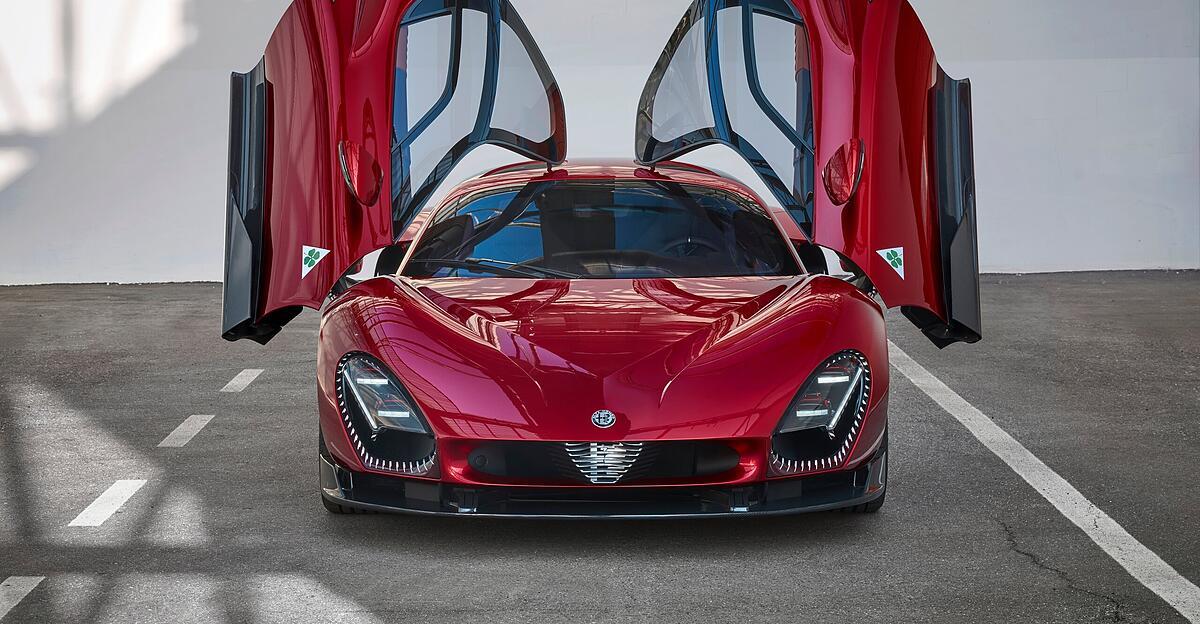If we look at Alfa Romeo, the history of the brand is full of countless successes. It is not surprising that the Italians use the rear-view mirror from time to time. Like these days, when the people of Turin presented the Alfa Romeo 33 Stradale – a tribute to the eponymous sportsman from the 1960s. Only 33 pieces will be built of the elegant two-seater, which aims to bridge the brand’s history and future.
For the project, the Italians set up a separate department called Bottega, where the ideas and requests of potential buyers were collected.
Classic: mid-engine
The distinctive radiator grille, the Scudetto, is framed by elliptical headlamps, and the sides feature gull-doors and air intakes. The cockpit has moved forward thanks to the mid-engine. The gull wing glass doors and large sunroof give the crew an almost cockpit view. The sharp rear spoiler lip and circular lights are a clear nod to the historic Alfa Romeo 33 Stradale.

Photo: Alfa Romeo
The interior is distinguished by a simple design and high-quality materials. The steering wheel is devoid of switches and buttons, and instead all controls are located on the center console and headliner. The dashboard and center tunnel are finished in aluminum, carbon fiber, leather and Alcantara.
Brembo offers an electronic braking system including carbon fiber ceramic disc brakes.
combustion or electric
The mid-engine has been known for a long time: the V6 biturbo with 456 kW (620 hp). The rear wheels are powered via an eight-speed dual-clutch transmission. In the purely electric version, power is transmitted to all four wheels. Power: 552 kW (750 hp). Top speed for both versions: 333 kilometers per hour. The Italian needs just under three seconds for the standard sprint. (Hebrew)
author
Carsten Hepstreet
editing engine

Carsten Hepstreet

“Total coffee aficionado. Travel buff. Music ninja. Bacon nerd. Beeraholic.”










More Stories
Wealthy families take more risks when it comes to money.
Salesforce and NVIDIA Form Strategic Collaboration to Drive AI Customer Innovation
Changing banks causes problems for customers